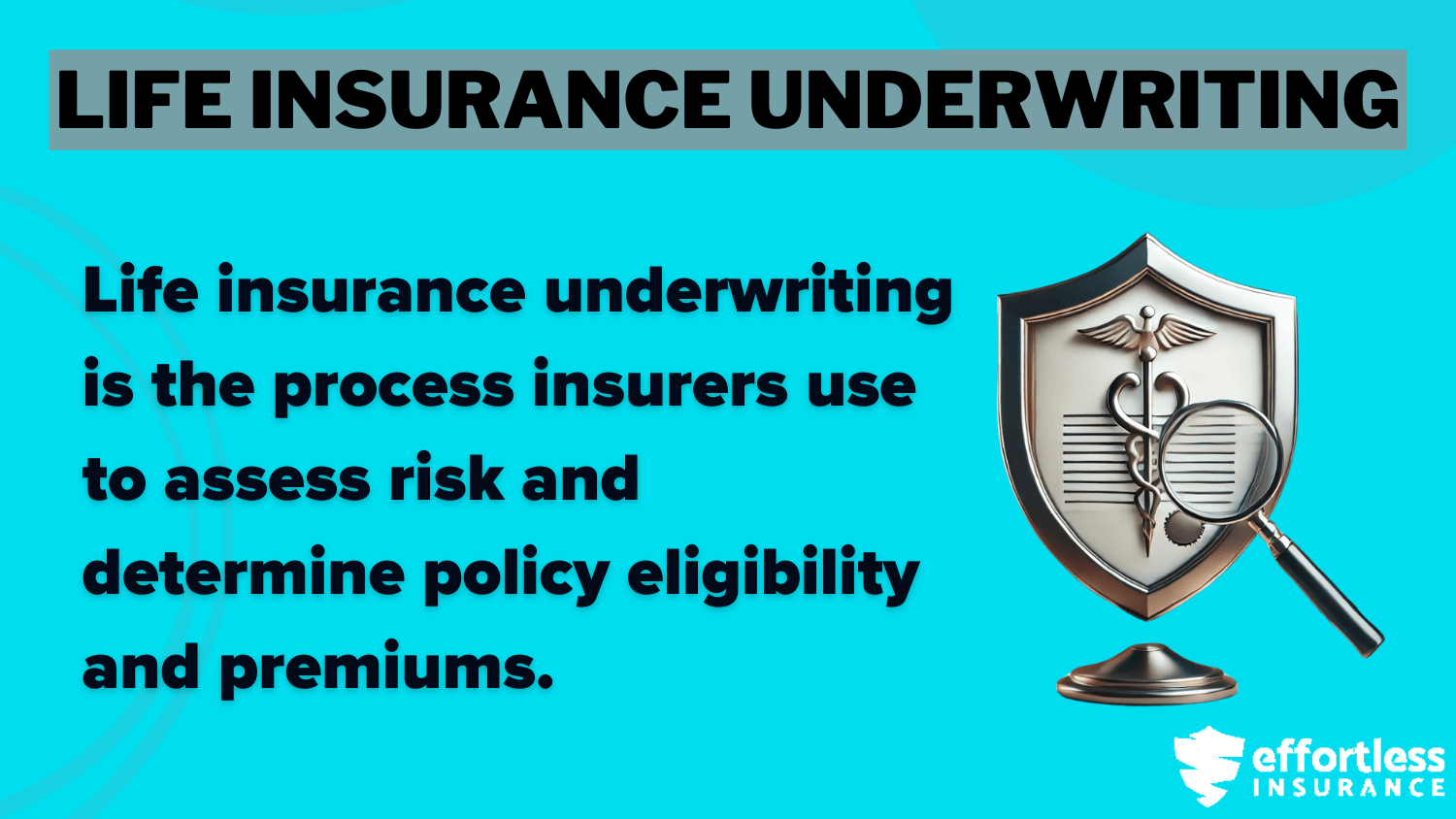Best Life Insurance After Skin Cancer in 2025 (Your Guide to the Top 10 Providers)
Foresters Financial, Mutual of Omaha, and State Farm give the best life insurance after skin cancer, with rates starting at $47 per month. These companies offer competitive pricing, flexible coverage, and options tailored to those seeking reliable protection after skin cancer.
Free Life Insurance Comparison
Compare Quotes From Top Companies and Save
Secured with SHA-256 Encryption
Travis Thompson
Licensed Insurance Agent
Travis Thompson has been a licensed insurance agent for nearly five years. After obtaining his life and health insurance licenses, he began working for Symmetry Financial Group as a State Licensed Field Underwriter. In this position, he learned the coverage options and limits surrounding mortgage protection. He advised clients on the coverage needed to protect them in the event of a death, critica...
Licensed Insurance Agent
UPDATED: Dec 23, 2024
It’s all about you. We want to help you make the right coverage choices.
Advertiser Disclosure: We strive to help you make confident life insurance decisions. Comparison shopping should be easy. We are not affiliated with any one life insurance provider and cannot guarantee quotes from any single provider. Our life insurance industry partnerships don’t influence our content. Our opinions are our own. To compare quotes from many different companies please enter your ZIP code on this page to use the free quote tool. The more quotes you compare, the more chances to save.
Editorial Guidelines: We are a free online resource for anyone interested in learning more about life insurance. Our goal is to be an objective, third-party resource for everything life insurance related. We update our site regularly, and all content is reviewed by life insurance experts.
UPDATED: Dec 23, 2024
It’s all about you. We want to help you make the right coverage choices.
Advertiser Disclosure: We strive to help you make confident life insurance decisions. Comparison shopping should be easy. We are not affiliated with any one life insurance provider and cannot guarantee quotes from any single provider. Our life insurance industry partnerships don’t influence our content. Our opinions are our own. To compare quotes from many different companies please enter your ZIP code on this page to use the free quote tool. The more quotes you compare, the more chances to save.
On This Page
 0 reviews
0 reviewsCompany Facts
Whole Policy for After Skin Cancer
A.M. Best Rating
Complaint Level
 0 reviews
0 reviews 18,157 reviews
18,157 reviewsCompany Facts
Whole Policy for After Skin Cancer
A.M. Best Rating
Complaint Level
 18,157 reviews
18,157 reviewsThe best life insurance after skin cancer comes from Foresters Financial, Mutual of Omaha, and State Farm, with rates starting at $47 per month.
Foresters Financial has the best affordability, simple applications, and reliable coverage. Mutual of Omaha and State Farm follows closely with flexible options and strong customer support. These companies provide the best choices for comprehensive protection.
Our Top 10 Company Picks: Best Life Insurance After Skin Cancer
| Company | Rank | Bundling Discount | A.M. Best | Best For | Jump to Pros/Cons |
|---|---|---|---|---|---|
 | #1 | 10% | A- | Flexible Underwriting | Foresters Financial |
| #2 | 15% | A+ | Customer Support | Mutual of Omaha | |
| #3 | 17% | B | Local Agents | State Farm | |
 | #4 | 10% | A+ | Stable Rates | Nationwide |
| #5 | 12% | A+ | Affordable Term | Transamerica | |
| #6 | 8% | A++ | Whole Policies | MassMutual | |
| #7 | 12% | A+ | Health Rewards | John Hancock | |
| #8 | 10% | A+ | High Coverage | Prudential | |
 | #9 | 15% | A | Recent Remission | AIG |
| #10 | 10% | A | Long-Term Coverage | Lincoln Financial |
And also understanding the unique needs of individuals with a history of skin cancer, offering tailored policies that ensure peace of mind. Looking at sample life insurance rates is a good way to ensure you get the best deal.
Simplify your life insurance shopping by entering your ZIP code into our free quote comparison tool and find coverage that fits your budget and needs.
- Foresters Financial offers the best life insurance after skin cancer
- Mutual of Omaha and State Farm provide flexible policies
- Rates start at $47/month, and Foresters Financial is the top choice for coverage
#1 – Foresters Financial: Top Overall Pick
Pros
- Low Monthly Rates: Foresters Financial gives a term policy rate starting at $47 per month, making it affordable for people after skin cancer.
- Flexible Underwriting: Great for people after skin cancer, with policies that consider health history.
- Extra Perks: Includes member benefits like scholarships and community programs for policyholders after skin cancer.
Cons
- Limited Availability: It is unavailable everywhere, which could be difficult for some people after skin cancer.
- Basic Online Features: The website tools are not as advanced for managing policies after skin cancer. Find more details in this guide, “Foresters Life Insurance Company Review.”
Compare Quotes From Top Companies and Save
Secured with SHA-256 Encryption
#2 – Mutual of Omaha: Best for Customer Support
Pros
- Friendly Support Team: Known for great customer service, especially for people applying after having skin cancer.
Budget-Friendly Plans: Rates start at $49 per month for those who have had skin cancer.
Savings on Bundles: Offers a 15% discount when you combine life insurance with other policies after skin cancer.
Cons
- Takes Time: The approval process can be slower for people applying after skin cancer. Check out this “Mutual of Omaha Life Insurance Review” guide for more info.
- Limited Choices: Policy features may not be as flexible for those with a history of skin cancer.
#3 – State Farm: Best for Local Agents
Pros
- Friendly Local Agents: The State Farm’s local agents make applying for coverage after skin cancer not tricky.
- Bundling Savings: Offers a 17% bundling discount, helping people with a history of skin cancer save money.
- Affordable Coverage: Rates start at $54 per month for minimum coverage after skin cancer. Look at this guide, “State Farm Life Insurance Review,” for details.
Cons
- Limited Coverage Choices: May not offer enough options for people needing high coverage after skin cancer.
- Higher Whole Policy Rates: Whole Policy starts at $169/month, which could be pricey for skin cancer patients.
#4 – Nationwide: Best for Stable Rates
Pros
- Stable Pricing: They are known for keeping rates stable, starting at $57 per month for people after skin cancer.
- Financial Strength: An A+ rating gives the policyholders peace of mind after skin cancer.
- Flexible Options: It offers personalized plans for people after skin cancer. See this guide, “Best Life Insurance Companies That Accept ITIN,” for more details.
Cons
- Lower Discounts: The bundling discount is only 10%, which is lower than other companies offer for people with skin cancer.
- Limited Policies: Offers fewer whole-life policies to people after skin cancer.
Compare Quotes From Top Companies and Save
Secured with SHA-256 Encryption
#5 – Transamerica: Best for Affordable Term
Pros
- Budget-Friendly Rates: Offers low rates starting at $48 per month for people after skin cancer.
- Flexible Term Lengths: Provides term life options for people with skin cancer. See this “Transamerica Life Insurance Company Review” guide for all the necessary information.
- Easy Online Tools: Simple application and policy management for people after skin cancer.
Cons
- Limited Permanent Coverage: Focuses primarily on term life policies for people after skin cancer.
- Customer Service Delays: Help requests may take longer for skin cancer patients.
#6 – MassMutual: Best for Whole Policies
Pros
- Comprehensive Whole Life Options: Good for people seeking permanent coverage after skin cancer.
- Top Financial Rating: An A++ rating makes it a secure choice for people with skin cancer.
- Reasonable Rates: Only $53 per month term policy for skin cancer patients. Learn more from this guide, “Royal Neighbors Final Expense.”
Cons
- Smaller Discounts: The bundling discount is only 8% for people with skin cancer.
- Long Application Process: Requires extra steps for people after skin cancer.
#7 – John Hancock: Best for Health Rewards
Pros
- Rewards for Healthy Living: Vitality program helps people save money by staying healthy after having skin cancer.
- Flexible Plans: It offers many policy options for people with skin cancer, with rates starting at $61 per month.
- Trusted Company: It has strong financial ratings and is a good choice for skin cancer patients. Explore our “John Hancock Life Insurance Review” guide to learn more.
Cons
- Higher Starting Rates: Premiums may feel high for people after skin cancer.
- Confusing Rewards Program: Health benefits can be hard to understand for people with skin cancer.
Compare Quotes From Top Companies and Save
Secured with SHA-256 Encryption
#8 – Prudential: Best for High Coverage
Pros
- Large Coverage Amounts: It is excellent for people needing high limits after skin cancer.
- Strong Financial Backing: An A+ rating offers security for policyholders after skin cancer.
- Affordable Options: Rates start at $59 per month for people with skin cancer. For more information, see this guide, “Prudential Life Insurance Review. “
Cons
- Complicated Policies: Some plans are more complex for people after skin cancer.
- Expensive Whole Policy: It starts at $190/month, a higher cost for people with skin cancer.
#9 – AIG: Best for Recent Remission
Pros
- Tailored Plans: It is designed for people who have overcome skin cancer. See the “AIG Life Insurance Review” guide for all the necessary information.
- Affordable Rates: Offers coverage starting at $52 per month for people after skin cancer.
- Flexible Options: Policies work well for unique situations after skin cancer.
Cons
- Hard-to-understand Terms: Policy details may be unclear for people after skin cancer.
- Inconsistent Support: Customer service quality varies for people with skin cancer.
#10 – Lincoln Financial: Best for Long-Term Coverage
Pros
- Excellent for Long-Term Needs: Offers policies for people after skin cancer who want lasting coverage.
- Affordable Whole Policy: It starts at $155 per month for people with skin cancer.
- Reliable Company: They have strong ratings and are a good option for people after skin cancer. Check out this “Protective Life Insurance Review” guide for more info.
Cons
- Essential Online Tools: Lacks advanced digital options for managing policies after skin cancer.
- Smaller Discounts: The bundling discount offer for people with skin cancer is only 10%.
Compare Quotes From Top Companies and Save
Secured with SHA-256 Encryption
Skin Cancer Survivors
According to the American Academy of Dermatology, skin cancer is the most prevalent type of cancer in the U.S. adult population. It is estimated that one in five adults will develop a type of skin cancer in their lifetime. More than a million people are living with melanoma, and cases are increasing.
To choose the right life insurance for skin cancer, focus on your financial goals, dependents' needs, and future obligations.
Tim Bain Licensed Insurance Agent
While a diagnosis of skin cancer doesn’t rule out life insurance, early detection and ongoing medical care are crucial. To secure coverage, share your medical history and compare insurers who consider your overall health. Skin cancer is the most common form of cancer in the U.S., resulting from uncontrolled cell growth due to UV radiation exposure.
Best Life Insurance Companies for Customers With Skin Cancer
| Companies | Best For |
|---|---|
| Cigna | Best Value and Rate |
| MetLife | No-Exam Insurance |
| Mutual of Omaha | Cancer Plus Critical Illness |
| Physicians Mutual | Additional Riders |
The main types are basal cell carcinoma, squamous cell carcinoma, and malignant melanoma. The best way to find insurance in your particular case is to comparison shop, ask an insurance agent for suggestions, and keep looking around. View this guide, “Types of Life Insurance: Find the Right Policy for Your Needs,” for more info.
What Insurance Companies Consider When Insuring Skin Cancer Survivors
When insuring individuals with a history of skin cancer, the insurance underwriter is interested in a few necessary parameters to gauge life insurance risk class gauge the risk you pose to the insurer.
After Skin Cancer Life Insurance Monthly Rates by Provider & Coverage Level
| Insurance Company | Term Policy | Whole Policy |
|---|---|---|
 | $52 | $178 |
 | $47 | $163 |
| $61 | $189 | |
| $56 | $155 | |
| $53 | $173 | |
| $49 | $141 | |
 | $57 | $184 |
| $59 | $190 | |
| $54 | $169 | |
| $48 | $137 |
How severe was the condition? Have you received full treatment? Are you following your doctor’s orders? This approach applies to other types of medical impairments such as Type 2 diabetes, high cholesterol, or sleep apnea, for instance. Let’s discuss the questions the underwriter will ask that are related to skin cancer:
Date of First Diagnosis
The date you were diagnosed, along with how much time has passed, will give the underwriter an idea of how safe you are to insure. As previously explained, if you are in remission, the insurance company will be interested in knowing how long you have remained cancer-free. Five years of remission is typically how long it would take for you to receive the most favorable rate.
The Type of Skin Cancer You Have Had
This question is a big one not only concerning your overall health but your life insurance rates. As mentioned above, there are three types of skin cancer:
- Basal Cell Carcinoma (BCC): The most common skin cancer with the best prognosis, appears as open sores, red patches, or scars, often due to sun exposure. It rarely spreads but can recur. After excision, it’s highly treatable, and insurers may offer preferred rates.
- Squamous Cell Carcinoma (SCC): The second-most common type, squamous cell carcinoma (SCC), arises in the skin’s middle and outer layers. About 3–10% may spread, but localized SCCs removed surgically often qualify for preferred rates.
- Malignant Melanoma: This rare but dangerous skin cancer develops when DNA damage in skin cells causes mutations, leading to malignant tumors. Life insurers often decline recurrent melanoma patients.
Malignant melanoma, the deadliest skin cancer, spreads rapidly to lymph nodes and other organs. Regular full-body screenings are crucial, especially for those prone to moles or with fair skin. Life insurance approval is challenging for individuals with a history of melanoma.
Types of Skin Cancer You Have Experienced
Insurers rely on this diagnosis to predict the outcome and life expectancy with your particular level of cancer. Basal cell cancer is the most likely to put you in a lower risk class.
Life Insurance Discounts From the Top Providers for After Skin Cancer
| Insurance Company | Available Discounts |
|---|---|
 | Healthy Lifestyle, Multi-Policy, Automatic Payment, Non-Smoker |
 | Health Conditions Improvement, Family Bundle, Loyalty, Wellness Program |
| Vitality Program, Non-Smoker, Activity-Based Rewards, Bundling | |
| Wellness Rewards, Multi-Product, Non-Smoker, Automatic Payment | |
| Good Health, Financial Strength Loyalty, Multi-Policy, Safe Living | |
| Non-Smoker, Early Application, Bundling, Healthy Lifestyle | |
 | Wellness Program, Multi-Policy, Non-Smoker, Automatic Payment |
| Health Management, Fitness Incentive, Bundling, Chronic Illness Coverage | |
| Multiple Policy, Non-Tobacco User, Loyalty, Safe Driving (if Auto Bundled) | |
| Healthy Lifestyle, Loyalty Discount, Non-Smoker, Payment Frequency Discount |
Basal cell carcinoma coverage is usually approved, but squamous cell carcinoma often results in higher premiums due to its worse prognosis. Melanoma, the most aggressive skin cancer, presents the greatest challenge, with approval typically limited to costly standard or substandard rates.
Assessing Whether Cancer Has Spread Beyond the Skin
The pathology report will not only help the doctor come up with a treatment plan but will also give the life insurance underwriter more information about your insurability chances. The underwriter will take a close look at the staging, classification, and ratings based on the staging system. A skin cancer staging system is based on TNM (tumor, node, metastasis).
Life insurance applications evaluate cancer stages based on tumor size (e.g., Tis, T1a, T1b), Clark Level classification, and the presence of ulceration. These factors determine the cancer’s severity and influence underwriting decisions.
The ABCDEs of self-detection—Asymmetry, Irregular Borders, Color variation, Diameter larger than 6mm, and Evolving changes—are key for identifying potential skin cancer. Early detection is crucial for medical evaluation. A favorable diagnosis can improve your chances of qualifying for life insurance.
Evidence of Recurrence Observed
Basal skin cancer recurrences are common but rarely spread. If you’ve had recurrences of malignant melanoma, positive lymph nodes, or metastases, traditional life insurance may be unavailable.
In this case, a guaranteed issue policy ensures coverage despite pre-existing conditions, though it comes at a higher cost.
Numbers of Episodes & Date of Last Episode
Assessing your condition involves reviewing the frequency and timing of episodes. Underwriters use formulas to determine risk, so the longer you’re free of recurrence, the better your chances for lower rates.
More than a third of people think life insurance is more costly than it actually is. Make sure you have the facts — and use our life insurance calculator to see if your loved ones are truly protected.
— Prudential (@Prudential) February 8, 2022
Providing at least five years of medical records is essential, especially if your cancer is in remission. Comparison shopping is crucial—an experienced agent or our tool can help you find the best life insurance rates.
Rate Classes
In general, life insurance rates are classified into four basic groups (Preferred Plus, Preferred, Standard Plus, and Standard). Depending upon your insurance company’s particular rating system, however, there are up to 16 different classifications, as illustrated from this table. When dealing with skin cancer and life insurance, comparison shopping is crucial to secure the best rates.
Life Insurance Rate Classifications
| Rate Classification | Typical Factors Affecting Score |
|---|---|
| Preferred Plus | Excellent health, good family history, normal height/weight |
| Standard Plus | Certain medications and/or family history of certain diseases |
| Standard | Higher Body Mass Index (BMI) and significant family history |
| Table Rating 1–2 (or A–B) | Average health, but may have a prior illness or mild, chronic condition |
| Table Rating 3–4 (or C–D) | >25 pounds overweight, high blood pressure and/or cholesterol, etc. |
| Table Rating 5–6 (or E–F) | Chronic conditions such as diabetes, overweight, abnormal lab results, questionable lifestyle |
| Table Rating 7–8 (or G–H) | Obesity, major health considerations, history of cancer, MS, or Parkinson's, etc. |
| Table Rating 9–16 (I–P) | Least favorable because of multiple conditions, lab results, poor health history |
Policies exist specifically for cancer treatment costs. For basal cell carcinoma, preferred rates are possible, but other health issues can lead to higher premiums. The insurance company, not the broker, sets the final rate. Severe cases like melanoma require detailed medical information for accurate assessment.
Cancer Survivors & Life Insurance
The good news is that cancer survivors can still apply for life insurance, but much of the approval process has to do with the type of skin cancer you have. Genetic testing may reveal certain hereditary cancers, including the susceptibility of skin cancer.
There is plenty of controversy surrounding this subject, particularly regarding the effect genetic testing may have on the life insurance underwriting process. Many cancer patients and those concerned about genetic risks undergo testing. Known as the “Angelina Jolie Effect,” this helps individuals understand their risk, such as for skin cancer.
If detected early, this information is typically not shared with underwriters. For life insurance, follow HIPAA privacy laws and be prepared for higher rates. You can also consider using life insurance advances for treatment costs, though fees may apply. Consult an insurance agent for options.
Compare Quotes From Top Companies and Save
Secured with SHA-256 Encryption
Criteria Insurance Companies Consider for Skin Cancer Survivors
When insuring individuals with a history of skin cancer, the insurance underwriter is interested in a few necessary parameters to gauge the risk you pose to the insurer.
When applying for insurance after basal or squamous cell carcinoma, it’s important to provide details about the severity of the condition and your treatment progress. Keeping your medical records and prognosis ready will simplify the application process.
Additionally, following your doctor’s orders and obtaining letters from your physician documenting your treatment and prognosis can strengthen your case.
Always review your policy annually to ensure it meets your skin cancer coverage needs and accommodates any changes in your life.
Jeffrey Manola Licensed Insurance Agent
This approach also applies to other types of medical impairments such as having Type 2 diabetes, pre-existing high cholesterol, or other disorders like sleep apnea. Finding out what life insurance companies test for in underwriting will help you be prepared. See this guide, “How a Pre-Existing Conditions Affects Life Insurance,” for more details.
Case Studies: Life Insurance After Skin Cancer
Getting life insurance after skin cancer can be tough, but providers like Foresters Financial, Mutual of Omaha, and State Farm offer great solutions. View this guide, “10 Best Life Insurance Companies,” for more info.
- Case Study #1 – John’s Experience with Foresters Financial: John, a 58-year-old with skin cancer history, found affordable coverage with Foresters Financial, starting at $47 per month. Their easy application process and helpful support made getting life insurance simple.
- Case Study #2 – Sarah’s Journey with Mutual of Omaha: Sarah, a 62-year-old with a history of skin cancer, chose Mutual of Omaha for flexible coverage. Their team helped her through the process, providing affordable rates and peace of mind.
- Case Study #3 – Mark’s Success with State Farm: Mark, 55, with a past diagnosis of skin cancer, found great rates with State Farm starting at $47. Their excellent service helped him secure the coverage he needed quickly.
Foresters Financial, Mutual of Omaha, and State Farm offer tailored life insurance for individuals with skin cancer. If you’re looking to protect your family’s future at a low cost, enter your ZIP code to buy affordable whole life insurance prices with our free quote comparison tool.

Frequently Asked Questions
What is the best life insurance option after skin cancer?
Obtaining life insurance after melanoma or skin cancer can be a concern for individuals with a history of these conditions. Many insurers consider factors like the type of cancer, stage, and treatment history when assessing risk. Foresters Financial, Mutual of Omaha, and State Farm are among the best options, offering tailored coverage with competitive rates starting at $47 per month.
How long do I need to wait after skin cancer treatment to apply for life insurance?
The waiting period varies by insurer, but many providers require 1-5 years after treatment, depending on the type and severity of the cancer. Getting affordable life insurance with a medical issue can be a challenge, but it’s not impossible. Use our free quote comparison tool to find the lowest rates.
What types of life insurance are available after skin cancer?
Options include term life, whole life, and guaranteed issue policies. The best choice depends on your health, budget, and coverage needs. Check this guide, “Term vs. Permanent Life Insurance: Which is better?” for more info.
How do insurance companies assess skin cancer in applications?
Insurers typically review your medical history, the type and stage of cancer, treatments received, and how much time has passed since your last treatment. Additionally, individuals with a history of skin cancer, including basal-cell carcinoma life insurance, may face skin cancer life insurance for melanoma and life insurance underwriting to evaluate long-term risks.
Can I qualify for life insurance after being treated for skin cancer?
Yes, many providers offer coverage after skin cancer, especially for less aggressive types like basal or squamous cell carcinoma. For instance, basal cell carcinoma life insurance may be easier to obtain compared to policies for more aggressive types of skin cancer, like melanoma.
Which factors affect life insurance rates after skin cancer?
Factors include the type and stage of cancer, age, overall health, and time since treatment. Lifestyle habits like smoking can also influence rates. Take a look at this guide, “How does life insurance work?” for more information.
How can I find the most affordable life insurance after skin cancer?
Compare quotes from top providers like Foresters Financial, Mutual of Omaha, and State Farm, and work with an insurance agent who understands your needs. Ultimately, while it may be challenging to obtain standard coverage, there are options available to secure life insurance for someone who has had cancer through careful evaluation and specialized underwriting.
Are life insurance rates higher for people with a history of skin cancer?
Yes, rates may be higher, especially for more advanced cancers, but some providers offer competitive rates starting at $47 per month for certain cases. Insurers may offer policies based on remission status and treatment outcomes, making life insurance with melanoma history possible but at potentially higher premiums or with exclusions.
Can seniors over 60 with skin cancer history still get life insurance?
Absolutely. Many companies, including Mutual of Omaha and State Farm, provide policies specifically designed for seniors with a history of skin cancer. Life insurance quotes after cancer can vary significantly depending on the individual’s medical history and overall health. See this guide, “Life Insurance Cost by Age: How Your Age Impacts Life Insurance Premiums,” for more details.
Should I disclose my skin cancer history on a life insurance application?
Yes, you must disclose your medical history accurately to avoid policy denial or cancellation later. Those who have had melanoma or a history of skin cancer may find that melanoma life insurance underwriting requires more thorough evaluations. When you’re ready to look at life insurance quotes, enter your ZIP code into our free comparison tool.
Compare Quotes From Top Companies and Save
Secured with SHA-256 Encryption
Travis Thompson
Licensed Insurance Agent
Travis Thompson has been a licensed insurance agent for nearly five years. After obtaining his life and health insurance licenses, he began working for Symmetry Financial Group as a State Licensed Field Underwriter. In this position, he learned the coverage options and limits surrounding mortgage protection. He advised clients on the coverage needed to protect them in the event of a death, critica...
Licensed Insurance Agent
Editorial Guidelines: We are a free online resource for anyone interested in learning more about life insurance. Our goal is to be an objective, third-party resource for everything life insurance related. We update our site regularly, and all content is reviewed by life insurance experts.
















